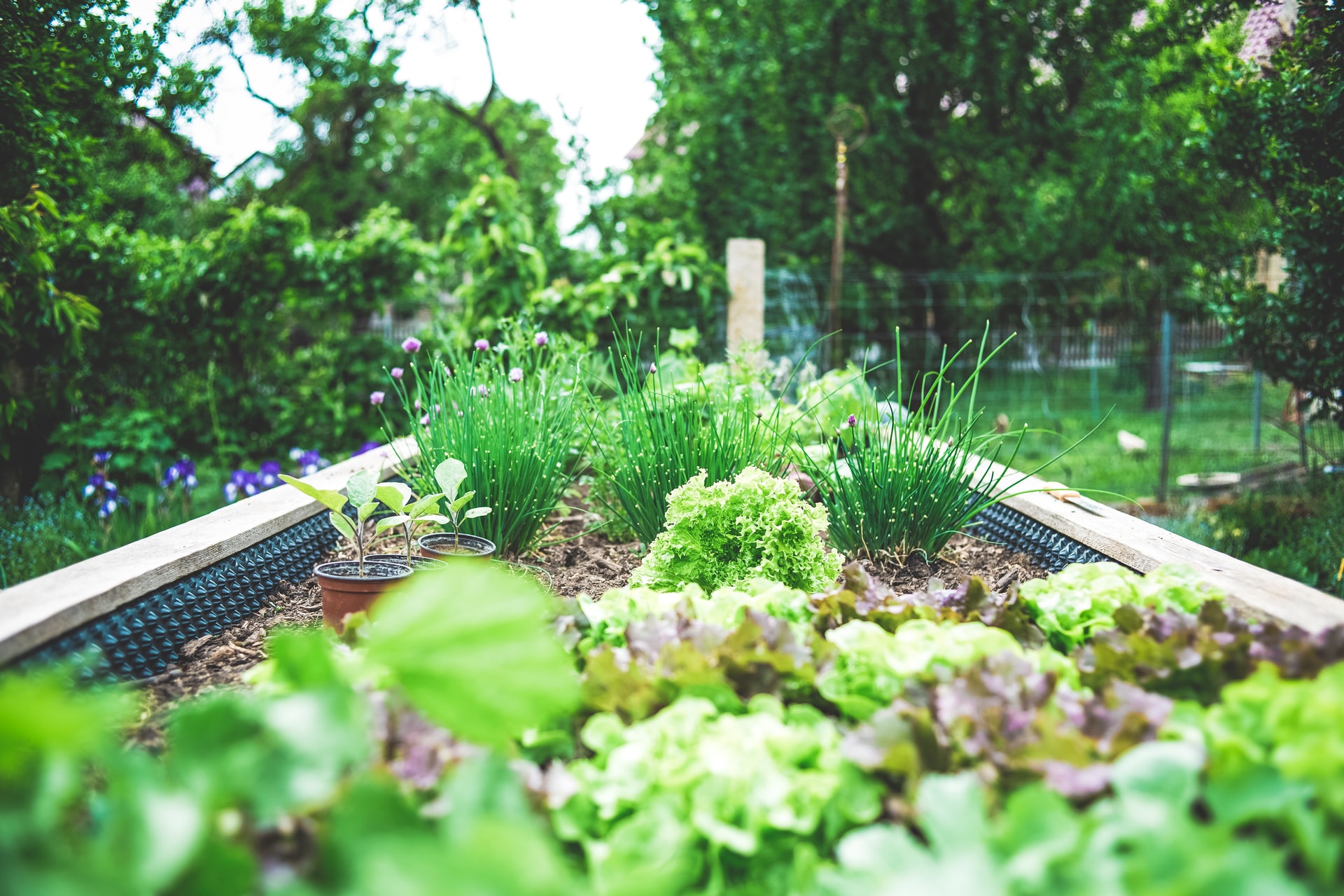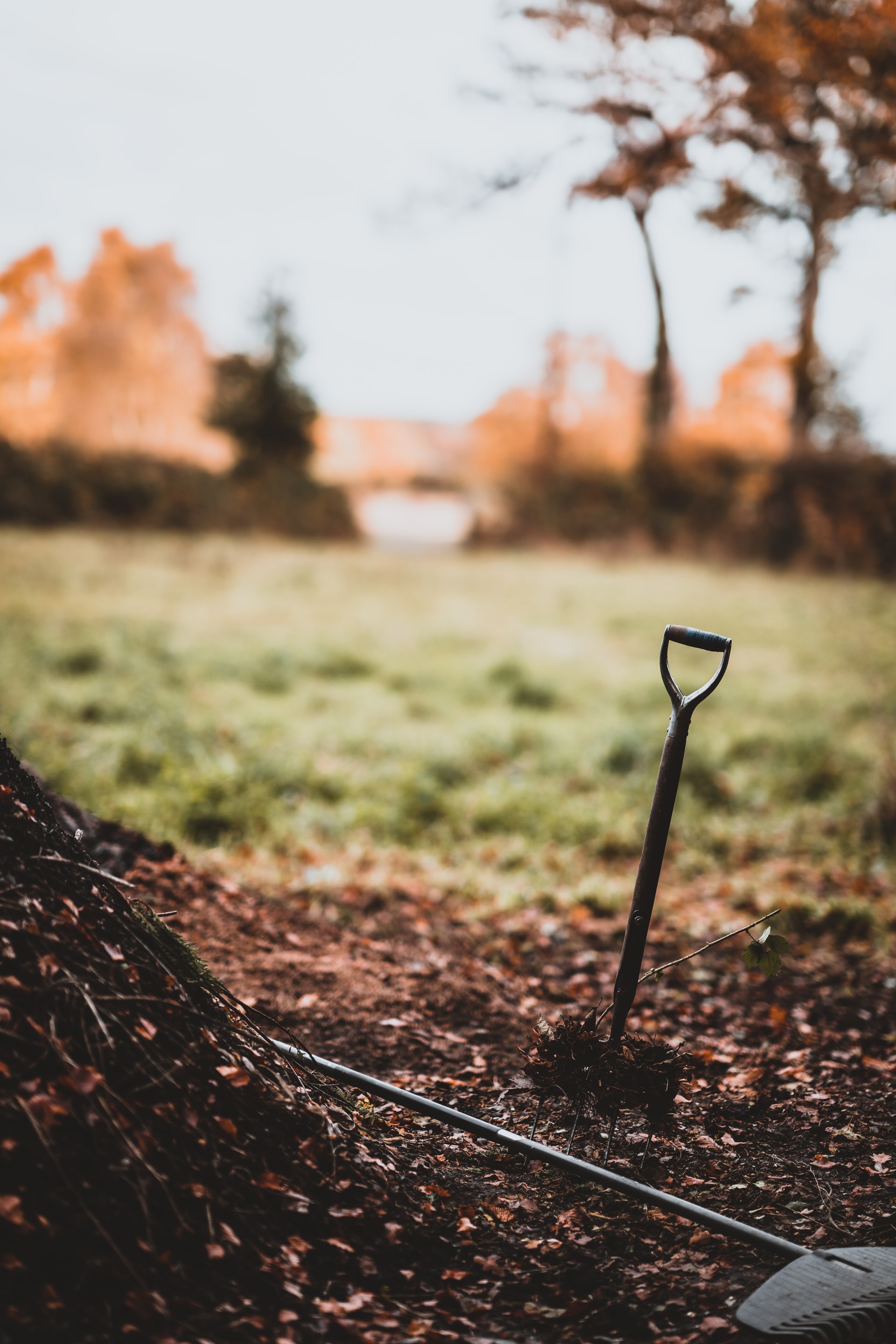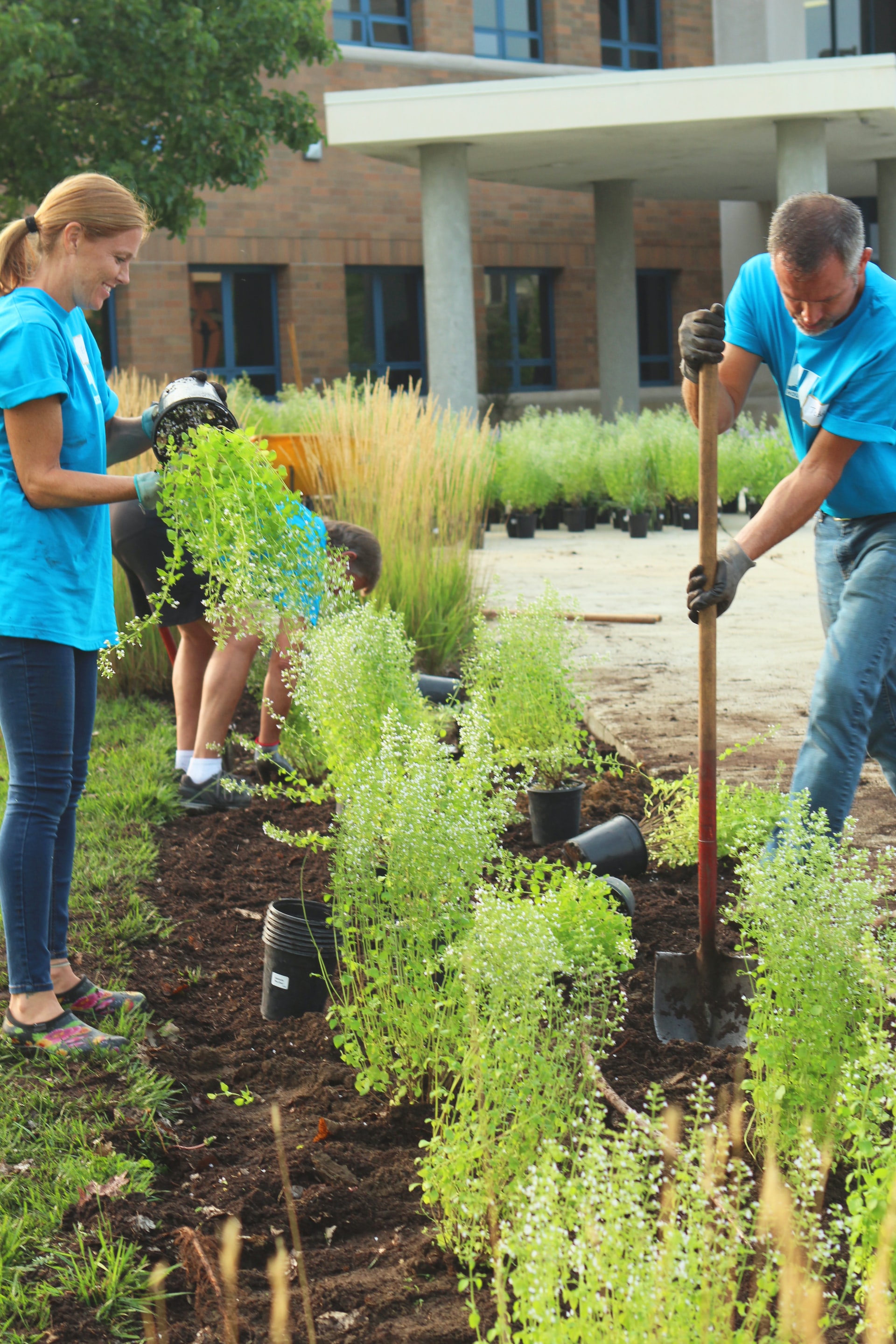Turning waste into resources with community composting

You may be familiar with backyard composting, but what about options for institutions, schools, businesses and people who would like another alternative to backyard and vermicomposting? Community composting can be a great solution to these dilemmas and a way to extend the lifespan of your local landfill and reduce greenhouse gas emissions at the same time.
But first, let’s talk about why composting is a perennial favourite for taking personal action against climate change!
Why does everyone talk about the need to compost?
When food is thrown out in the garbage, and sent to the landfill, that organic waste is compacted in a sanitary landfill. This is done to save space in the landfill and to prevent animals from scavenging food there. However, this means that the food will break down without much oxygen - in other words, it will be anaerobically broken down.

When this happens, the decomposition of the food does not take the usual route of turning into carbon dioxide and other nutrients, but rather it decomposes to produce methane. And while we hear a whole lot about Carbon Dioxide as a greenhouse gas, methane is much worse for climate change!
Methane is a greenhouse gas that has a global warming potential that is 25 times more powerful than carbon dioxide. So, by keeping our food waste out of the landfill and composting them in a composter, where they have access to oxygen, we are reducing our environmental impact and doing good for the planet.
But, not only does composting reduce greenhouse gas emissions from the landfill, it has a number of other benefits that can actually be restorative to the soil and beneficial to communities. Composting contributes significantly to sustainability, as it addresses many of the environmental and socioeconomic issues associated with food waste by using it as a resource.
For example, compost can be used as a high-nutrient fertilizer to increase agricultural yields, increase soil health, and increase the water-holding capacity of soil, therefore reducing the amount of water needed for agriculture and gardening. Beyond that, the harmful environmental effects from inorganic (chemical) fertilizers, such as water pollution, are greatly reduced when organic compost is used instead.

So, what is community composting?
Community composting is where a central composting site is created and maintained by a local group, social enterprise, or government and is available for use by community members. Think backyard composting, but bigger! Community compost sites are a great way to promote green neighbourhoods and facilitate social inclusion and community bonding.

In many cases, community composting programs accept organic materials such as food scraps and yard wastes. Certain substances that are usually not allowed are meat, dairy, weeds, and poisonous plants.
In general, community compost sites use low-tech composting technology such as open-air windrow composting. Windrow composting, which uses elongated piles of compost that require frequent turning, is the oldest and simplest composting technology, making it perfect for use by all members of the community. Turning can be done by hand, with a tractor, or a specialized machine called a “windrow turner”.
Other forms of composting include using a bin system in which organic material is contained within some sort of bin or series of bins. The material is turned for aeration and can be accessed from an open side or a door/hatch for loading and unloading.

There are other methods as well, such as an aerated static pile or in-vessel composting, but these methods are more high-tech, and also require more energy inputs.
Benefits of Community Composting
 In addition to the benefits mentioned above, community composting programs also have the benefits of:
In addition to the benefits mentioned above, community composting programs also have the benefits of:
- Raising community awareness about the environmental benefits of composting
- Educating community members, volunteers, and children about the composting process
- Creating healthier local soils
- Supporting locally grown healthy food production
- Facilitating for community collaboration
- Creating an opportunity for socialization
- Encouraging local volunteering and employment opportunities
Types of Community Composting Programs
Community composting programs will differ from place to place in how they operate, what materials they accept, as well as volunteering and participation opportunities.
For example, some community composting programs may be incorporated into community gardens. Those with access to plots in a community garden may also be able to dispose of their household food scraps at a composting site in the garden. The finished product may then be applied to the community garden as a fertilizer in order to create a closed loop system.

Similarly, composting programs within schools may allow community members or families of the students to drop off their food scraps for composting. These programs are not only good for the environment, but are also great at facilitating student learning and creating a sense of awareness of our food system and waste production.
Some community composting programs will have drop-off locations placed strategically throughout the community or neighbourhood where residents can drop off their food scraps for free. These scraps are either composted at the drop off site or gathered and transferred to a main composting site.
On the other hand, some community composting programs have pick-up services where volunteers or employees collect food scraps from residences, restaurants, grocery stores, coffee shops, and other sites and transport them to a nearby composting operation.
How is the finalized compost used?
There are a variety of ways in which compost can be used. Community-generated compost can be applied to community gardens to help them thrive, and volunteers and community members may also be able to take some home to apply on their personal gardens.

Finished compost can also be sold through local nurseries and gardener supply stores, farmers markets, or hardware stores. It may even be used in municipal or institutional projects to support healthy soils in the community.
Either way, community composting programs are another great way to reduce greenhouse gas emissions while improving soil quality and building community. Do you have one locally that you can contribute to? If not, maybe it’s time to get one started at your university, condominium, school, community centre, church or religious centre.
Need a quick refresher on what goes into a composter, and how to get started, I’ve got you covered!
Stay connected with news and updates!
Join my mailing list to receive the latest news and updates. Your information will not be shared.

